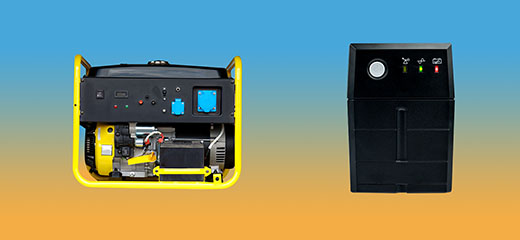
How to size your backup power supply
As loadshedding gets worse, many South Africans are looking for backup power supply solutions to keep the lights on during outages. Whether you’re looking at power banks, generators, inverters or solar systems, one of the key factors you have to decide on is the size of your chosen system.
Understanding your size requirements will help you choose a backup power supply that will meet your needs. If you already have backup power supply or are constrained by budget, understanding the capacity of the system will ensure you get the most use for your money without damaging the equipment.
What are watts?
If you take a look at your electricity bill or your prepaid voucher, you will see that electricity units are measured in watts (W), where 1 000W is equal to 1 kilowatt (kW). Your household appliances, electronics, devices and lighting use these electricity units to operate.
When looking at backup power solutions, it is the watt or kilowatt rating that tells you the maximum wattage the system can deliver to you at the same time.
Tip: Some advertisements for inverter and backup battery systems display the volt-amps (VA) in their headlines rather than watts. VA refers to ‘apparent power’ while watt refers to ‘real power’. If you come across a product with a VA rating, simply look to the specifications for its watt rating.
Establish your watts
Identifying the best size of backup power for your specific needs requires calculation of how many watts you want your system to provide. This means you need to decide which appliances and devices you want your system to power simultaneously during outages.
To find out how many watts each of your appliances consume, you can look for the specifications on the device itself, its packaging or the owner’s manual. If you no longer have this information on hand and it isn’t printed on the device, you can simply read our article on the average electricity consumption of household appliances and devices to make it easier for your calculations.
Tip: If you are using industry averages to calculate consumption, always use the higher wattage figure to ensure your system isn’t damaged by overloading.
Make a list of all the appliances you want powered by your backup system and add up the watt requirements of each to calculate your total output requirements.
For power banks, inverters and solar systems, you should also include an ‘overload cushion’ to protect your backup power system. Experts suggest that the load should never exceed 75% of the system’s capacity.
This can be calculated in two ways:
Total output (watts) x 33% = Minimum system size (watts)
System size (watts) – 25% = Maximum output (watts)
Generator motors, on the other hand, can be damaged by underloading, and require the load to be between 75% and 100% to stay in good condition.
This can be calculated as follows:
System size (watts) – 25% = Minimum output (watts)
Calculating battery needs
While generators use fuels such as petrol and diesel to generate electricity, power banks, inverter systems and most solar systems make use of batteries to store electricity until it is needed.
This means that thought needs to go into the size or number of batteries required to keep your appliances powered over a period of time. For this, you need to work out how many watt-hours (Wh) you require.
This can be calculated as follows:
Total output (watts) x Required operating time (hours) = Minimum storage requirements (Wh)
As an example, if you needed 2 000W of power for 4 hours, your batteries would need to have a capacity of 8 000Wh (or 8kWh).
Tip: Bear in mind that batteries lose capacity over time, so you may want to include a ‘capacity cushion’ of an extra hour to ensure you don’t run out of battery capacity a few months down the line.
Head to LookSee for a range of quality power solutions with convenient financing options.









